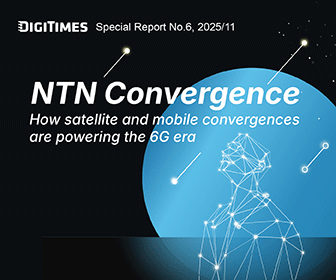Following the launch of satellite communication-capable phones by Apple and Huawei in Q3 2022, other mobile phone companies have expressed interest in introducing similar phones or products. A growing range of collaborations between satellite operators, mobile phone manufacturers, and telecom operators have become highly anticipated. It is expected that more brands will join the party in 2023.
Satellite communication is a crucial technology for addressing the issue of inadequate signal coverage in the next-generation communication landscape, as it possesses the unique capability of providing a broad signal coverage range. In the past, satellite and mobile communication were regarded as separate technologies and industries. However, in recent years, non-terrestrial communication was included in discussions by the 3rd Generation Partnership Project (3GPP), and specifications for Non-Terrestrial Networks (NTN) were introduced in the Rel-17 version. As a result, mobile phone manufacturers have gradually recognized the importance of satellite technology, and opportunities for collaboration between the communication and satellite industries have increased.
According to DIGITIMES Research analyst Shen Zouhao, phones with satellite communication functions have not gained much popularity yet, as current satellite communication technology is still in its nascent stages of development. Moreover, the communication protocol utilized varies depending on the satellite communication service provider that the phone is paired with.
To solve the problem of signal coverage in remote locations, the telecommunications industry has increasingly relied on satellite technology to leverage the extensive coverage area of satellite networks to fill gaps in telecommunications signals. Leading international organizations such as the 3GPP and the International Telecommunication Union (ITU) consider NTN technology to be a crucial factor in the development of next-generation communication.

Source: DIGITIMES Research, April 2023
There are two modes by which smartphones can connect to satellites: use the spectrum intended for satellites, or for smartphones. The first involves utilizing a phone's built-in component capable of processing satellite signals and communication protocols. The second involves upgrading the satellite hardware to transmit communication protocols and signal frequencies that can be processed by phones. However, implementing the latter mode requires addressing spectrum interference monitoring and regulation issues across the entire communication environment. Due to the complexity of satellite technology, it will take time to modify spectrum allocation regulations and building a functional satellite network. On the other hand, adding satellite signal processing and communication protocol capabilities to the device does not necessitate any additional regulatory changes in the spectrum, and is expected to have an earlier commercialization schedule. The current direct satellite connection cases for phones fall under this mode.
In general, major mobile phone brands have shown a favorable attitude towards satellite communication technology. They have been gradually shifting from one-way SMS to two-way SMS or voice services in terms of technology. However, the use cases are still primarily restricted to emergency situations. It is anticipated that the options of mobile phone supporting satellite communication will increase in the second half of 2023.
Apple selected Globalstar's satellite network and ground stations for iPhone 14 users, while Huawei launched a service on the Mate 50 using China's Beidou system. Both enhance their satellite emergency SOS feature, but users can only send texts by satellite instead of receiving them.
You can also expect to see other devices offering satellite connectivity. Motorola and British smartphone maker Bullitt launched the Motorola Defy 2 and CAT S75 smartphones with built-in two-way satellite messaging.

Source: DIGITIMES Research, April 2023
In March 2023, Huawei released Mate X3 and P60 series, which feature two-way satellite messaging. The Huawei Watch Ultimate smartwatch has the same functionality. The Chinese tech heavyweight clarified that they solely integrate satellite technologies; the pricing for services will be determined by telecom operators and may vary depending on their respective plans.
As Apple and Huawei are leading players in smartphone industry, it is anticipated that other phone manufacturers will also begin incorporating satellite communication capabilities in their new models. This has made satellite chips offered by mobile processor companies a major focus. Currently, two types of solutions are being offered by chip manufacturers: "open standard chips" and "proprietary chips." The former enables satellite connectivity with any satcom service provider, whereas the latter is tied to a specific provider or offer a comprehensive service that includes emergency satcoms.
The current generation of satellite phones promises two-way texting and calling for emergency situations. It takes several seconds to send or receive messages. Supporting voice calls, internet browsing, video transmission, and other features remains a long-term goal. The performance of satellite phone access to satellite networks is mainly hampered by the incomplete development of the phone's RF module, which cannot handle signals from very far distances, and the use of independent communication protocols by several phone brands for their satellite communication solutions. These protocols are incompatible with the 3GPP's NTN standard specifications, presenting obstacles that the satcom industry must overcome to ensure future development.
About the analyst
Shen Zouhao has a Bachelor's and Master's degree in Information Management and has accumulated approximately three years of industry research experience in government think tanks. He has assisted in the execution of large-scale government projects. Currently, his main research areas include telecommunications technology and mobile phone market trend observation, such as open RAN market and B5G technology development trends.





